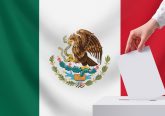One of the great surprises of the 2018 Mexican election was not the largely predicted landslide victory of Andrés Manuel López Obrador but the commanding performance of his political party, Morena. In just its second federal election, Morena won a vast legislative majority in the federal Congress and control of state governments across the country. The party was a relative newcomer on the scene— it was founded just 5 years prior as a civic project of the left. However, in the run-up to the 2018 election, the party ballooned in size, absorbing members from across the political spectrum. Still, Morena was able to present itself as a fairly unified front in the 2018 election.
However, in the past few months, the once latent internal divisions within the party have surfaced. The main cause of this has been a protracted battle over the election of a new party president. Examining the infighting produced by this election makes it clear that the very developments that allowed Morena to become a big umbrella party in 2018 set it up for the conflicts it now faces.
For its early history, Morena was formally led by López Obrador. In the run-up to the 2018 election, he stepped down from the party presidency and handpicked Yeidckol Polevnsky to lead the party throughout the campaign. To avoid party drama immediately after the election, Lopez Obrador asked for Polevnsky’s term to be extended one year until an election could be held in 2019.
Now, four candidates, including Polevnsky, are seeking the party presidency. Each of these candidates represents a different faction of Morena with a distinct vision for the party’s future. On one side are candidates who want to return to its pre-2018 status as a grassroots-based party. These candidates, like the chair of Morena’s National Congress Bertha Luján, have called for the party to refocus on local party branches, integrate new members and, recommit to leftist issues. On the other side are candidates who want to ensure the party remains welcoming to all and centered around López Obrador. This includes Polevnsky herself and Mario Delgado, who leads Morena in the Chamber of Deputies. This contest, between more radical leftists and moderate pragmatists, has put on display the party’s main internal schism. In this sense, it has come to represent something more than a leadership election; it is a battle for the soul of the party.
Adding to this drama is a confusion over the protocol for how the new party president should be chosen. According to the official bylaws, the new party president should be selected by the delegates of Morena’s National Congress. However, several leaders, including López Obrador and Polevnsky, have instead called for the election to be decided through polling. The party has flip flopped between the two options several times with different factions battling for their preferred option. The election was supposed to be finalized by the end of November. Now, it does not seem like it will conclude until this upcoming summer.
A major reason for the chaos is the tension between Morena’s formal rules and the discretion of its leadership. Morena has codified bylaws and a complex organizational structure to help distribute power. However, the party is largely subservient to its central figure: López Obrador. His leadership and magnetism is largely what held Morena’s diverse membership together in 2018. In the run-up to the election, López Obrador often modified party rules to help accommodate new members and push his preferred candidates. Because López Obrador was so beloved and the party was unified around the cause of winning the election, there was rarely vocal dissent.
Upon assuming the presidency, López Obrador pledged to stay out of party business. Still, over the summer, he made a public comment that he wanted the election to be decided by a poll rather than Morena’s National Congress. Many of López Obrador’s most loyal supporters, namely Polevnsky, immediately called for the procedures to be changed. Unlike in 2018, Morena’s formal institutions pushed back and criticism was widespread. The Commission of Honesty and Justice, which is Morena’s judicial body, originally ruled against alternative ways of administering the election, citing the parties formal statutes. Since then, the Commission and various party leaders have each independently attempted to execute their own preferred election method, resulting in overlapping processes and timelines. However, each attempt has been derailed as nobody wields the necessary authority to fully control the party.
Further, the race has been confounded by questions around formal membership in Morena. In Mexico, political parties must officially register their members with the National Electoral Institute. However, Morena has not registered new party members since November of 2017. This is because party leaders anticipated that 2018 election would result in an upswell in voters who identified with Morena. To ensure that the party remained controlled by its core supporters, the addition of new members was halted. According to Mexican law and Morena statutes, only registered party members can partake in internal processes, like a party leadership election. This has created an obvious problem for the party: a majority of its members, including many of its top politicians, cannot currently partake in the selection process. Now, with the situation already tense, the party leadership will have to move forward with a registration that could provoke further conflicts. Already, there was violence in Morena’s local assemblies over membership criteria.
In 2018, Morena was able to overcome the challenges of party building through its sheer electoral momentum. It hastily integrated a diverse set of supporters into its ranks and modified its policies based on the ad hoc decisions of Lopez Obrador. Now, the party is suffering from this haphazard approach to party building. With different factions still disagreeing over how the new party president should be elected, a resolution does not seem imminent. Fractionalization, a common fate for Mexican political parties, may be in Morena’s future.




